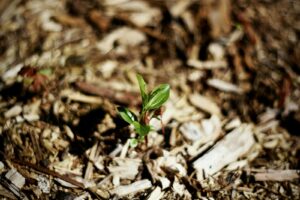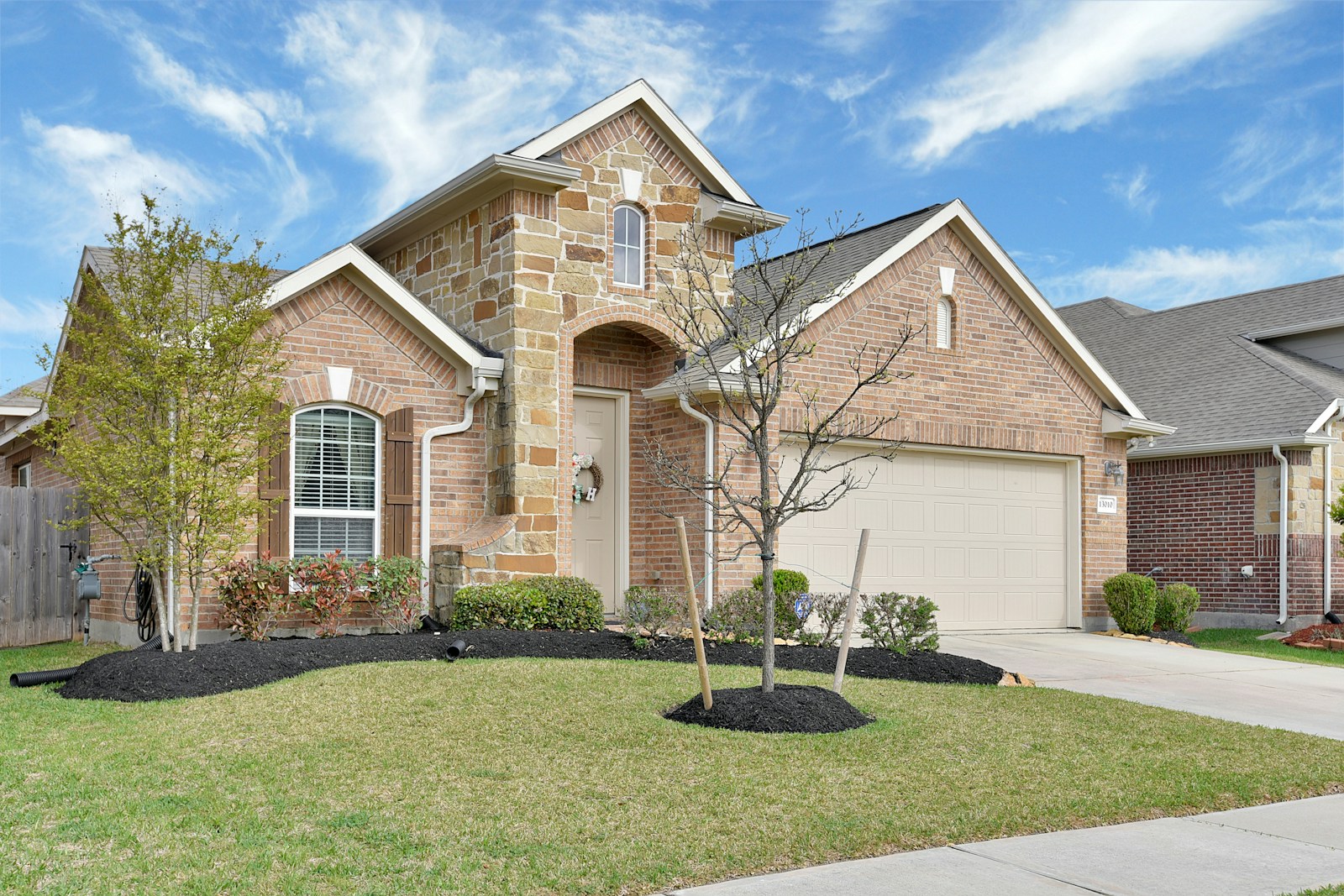Creating a low-maintenance landscape does not mean sacrificing aesthetics. Instead, it involves selecting the right plants, utilizing smart irrigation systems, and integrating hardscaping to create a vibrant outdoor space with minimal upkeep. For busy homeowners craving a beautiful outdoor space but struggling to find time for traditional gardening, a low-maintenance landscape is more essential than ever. This guide is designed for you to learn how to cultivate a toolset to make your home or business more beautiful without need for constant upkeep.
To achieve a low-maintenance landscape, careful planning is essential. Begin by assessing the existing landscape, including the soil type, sun exposure, and current plant species. Soil quality directly influences plant health, so it’s crucial to test for pH and nutrient levels. Understanding the landscape’s sun exposure allows you to choose plant.
What Are the Main Time-Consuming Aspects of Maintaining Your Curb Appeal?
- Lawn Care: Mowing, edging, and fertilizing to maintain a lush, green lawn. This takes the most time on a weekly basis. Many people enjoy the process of mowing the lawn each week while others see it as a chore.
- Weeding: Regularly removing weeds from flower beds, lawns, and hardscape areas. Weeding is difficult for many people as it requires a lot of bending over and using hands. There are strategies will will get to later on in this guide to reduce the amount of weed pulling that you will need to do in the future.
- Pruning and Trimming: Keeping shrubs, hedges, and trees well-maintained and within desired shapes.
- Cleaning Hardscapes: Power washing driveways, sidewalks, and patios to keep them clean.
- Mulching: Refreshing mulch to maintain a neat appearance and prevent weed growth. A good bed of mulch will save you a lot of effort in the future if one of your goals is to reduce weeding.
- Watering: Maintaining a regular watering schedule, especially during dry periods. Irrigation systems can automate this process and reduce the hours that you spend working out in the yard. Efficient systems will also save you in water bill costs as opposed to using a hose when the timing is dialed in properly.

Make a Plan
- Set Clear Goals and a budget:
- Define what you want to achieve with your landscape, considering factors like aesthetics, functionality, and budget.
- Determine how much time you can realistically dedicate to maintenance and align your goals accordingly.
- What are you trying to communicate to your neighbors or guests who visit your home?
- How much are you willing to spend on upfront costs such as buying plants, installation, and maintenance?
- Assess Your Existing Landscape:
- Evaluate the current conditions of your landscape, including soil quality, sunlight exposure, and existing vegetation.
- Identify plants and features that require high maintenance or are not thriving, noting areas that need improvement.
- Choose Low-Maintenance Plants:
- Select native and drought-tolerant plants that are adapted to your region’s climate.
- Opt for perennials over annuals and choose slow-growing varieties to minimize pruning.
- Plan Efficient Irrigation:
- Design an irrigation system that suits your landscape’s needs, such as drip irrigation or soaker hoses to reduce water waste.
- Group plants with similar water needs to simplify watering routines.
- Utilize Mulch and Ground Covers:
- Apply organic mulch around plants to suppress weeds, retain moisture, and reduce soil erosion.
- Plant ground covers to fill in gaps and reduce the need for weeding.
- Taking the time to lay down weed control mesh or other similar tools will be a long term investment. This will reduce your need to constantly be out in the yard pulling weeds or save you money from paying a gardener or landscaper for this service.
Weed Control Strategies
- Apply a thick layer (2-3 inches) of organic mulch, like wood chips or straw, to suppress weed growth by blocking sunlight.
- Plant dense ground cover species to crowd out weeds and minimize bare soil where weeds can thrive.
- Use landscape fabric beneath mulch in flower beds to create a physical barrier against weeds.
- Apply pre-emergent herbicides in early spring or fall to prevent weed seeds from germinating. Spraying weeds will kill the plant, whereas sometimes trimming or pulling them will allow the weeds to grow back.
- Regularly remove weeds by hand before they set seed and spread. Pulling the roots out effectively will prevent the plants from growing out. Think about the difference between shaving and waxing hair on your arm.
- Healthy Lawn Maintenance: Keep your lawn thick and healthy by regularly fertilizing and mowing to prevent weeds from taking hold.
Implementing preventative measures such as these will reduce the amount of effort and hours of labor that you put into removing weeds from your yard.
Selecting plant species.
Here are a couple other guides that we have to help with the plant selection process:
Denton Native Plants Best Heat Tolerant Plants for Texas LandscapersSelecting low-maintenance plants is essential for creating a landscape that requires minimal care. Native and drought-tolerant plants should be prioritized, as they are adapted to the local climate and soil conditions, making them more resilient and easier to care for than non-native species. When choosing between perennials and annuals, perennials are a better option for long-lasting results since they return year after year, reducing the need for replanting. They also often require less frequent watering and fertilization than annuals. Ground covers, such as creeping thyme or clover, are effective for reducing weeding and retaining soil moisture. These plants grow densely, creating a natural barrier that prevents weeds from taking root while helping the soil retain moisture, thereby reducing the need for frequent watering.
Technological Strategies
- Efficient irrigation solutions play a pivotal role in low-maintenance landscaping, ensuring plants receive adequate water while minimizing waste. Installing drip irrigation systems is an excellent choice, as they deliver water directly to the plant roots, reducing evaporation and runoff. Smart sprinklers further enhance watering efficiency by adjusting schedules based on weather conditions and soil moisture levels.
- To save even more water, consider utilizing rain barrels to collect and store rainwater, which can be used for irrigation during dry periods.

- Incorporating hardscaping features like patios, pathways, and retaining walls not only adds structure and style to your landscape but also significantly reduces upkeep. Gravel, mulch, and stones create low-maintenance surfaces that don’t require frequent watering or mowing. Raised beds and retaining walls can add definition and improve accessibility, making garden maintenance simpler and more convenient for homeowners.
Creating a low-maintenance landscape begins with thoughtful planning and the selection of suitable plants and materials. Key tips include choosing native and drought-tolerant plants, installing efficient irrigation systems like drip lines or smart sprinklers, and incorporating hardscaping elements that reduce upkeep. These strategies not only simplify lawn care but also offer long-term benefits by saving time, water, and money. A well-designed landscape can enhance your home’s curb appeal, increase property value, and create a welcoming outdoor space for relaxation and enjoyment. For homeowners, now is the perfect time to start planning and implementing changes to create a landscape that suits both your lifestyle and maintenance needs.

